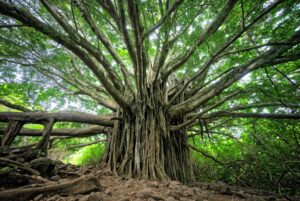Palm trees are iconic features of many landscapes on the Sunshine Coast, providing a tropical charm to residential and commercial properties. Nevertheless, there are situations where the imperative for palm tree removal arises, driven by factors such as disease, heightened safety risks, or the necessity for alterations in landscaping. Selecting the appropriate arborist for palm tree removal is paramount to guaranteeing the task is executed with precision, safety, efficiency, and in strict adherence to local regulations. Within this comprehensive guide, we will delve into essential factors that merit consideration when choosing the ideal arborist for palm tree removal in the Sunshine Coast region.

Qualifications and Certification
When entrusting the removal of your palm tree to a professional, it’s essential to verify their qualifications and certifications. An accomplished arborist should possess certification from esteemed organizations like the International Society of Arboriculture (ISA) or hold pertinent qualifications from a recognized educational institution. Certification serves as a guarantee that the arborist has undergone thorough training, equipping them with the essential knowledge and skills required for the secure and efficient removal of palm trees.
Experience and Expertise
The depth of experience an arborist holds in the realm of palm tree removal stands as a pivotal factor in assessing their aptness for the task at hand. An experienced arborist is likely to have encountered various palm tree removal scenarios, making them better equipped to handle different challenges that may arise. Additionally, inquire about the arborist’s specific expertise in dealing with the palm tree species on the Sunshine Coast, as different varieties may require unique approaches to removal.
Insurance Coverage
Palm tree removal involves inherent risks, including the potential for property damage or personal injury. Before hiring an arborist, confirm that they have comprehensive insurance coverage. This should include both liability insurance to protect against property damage and workers’ compensation to cover any injuries sustained by the arborist or their crew during the removal process. Request proof of insurance and ensure that it is valid and up to date.
Local Reputation and References
A reputable arborist will have a positive track record within the local community. Seek recommendations from neighbors, friends, or local gardening clubs who may have had experiences with arborists in the Sunshine Coast. Additionally, ask the arborist for references from previous clients. Contacting these references can provide valuable insights into the arborist’s professionalism, reliability, and the quality of their palm tree removal services.
Equipment and Safety Practices
The right equipment and adherence to safety practices are essential for a successful palm tree removal. Delve into details regarding the arborist’s equipment, ensuring it is meticulously maintained and aptly suited for the specific demands of the task at hand. Moreover, inquire about their safety protocols, encompassing the utilization of personal protective equipment (PPE) and the implementation of precautionary measures to avert accidents. A professional arborist will prioritize safety for both their crew and your property.
Local Regulations Compliance
Palm tree removal on the Sunshine Coast may be subject to local regulations and permits. A knowledgeable arborist should be familiar with these regulations and obtain the necessary permits before commencing work. Hiring an arborist who follows local guidelines demonstrates their commitment to ethical and legal practices.
Making the right choice of an arborist for palm tree removal on the Sunshine Coast demands meticulous deliberation and thoughtful consideration. By evaluating qualifications, experience, insurance coverage, local reputation, equipment, safety practices, and compliance with regulations, you can make an informed choice that ensures a smooth and professional palm tree removal process. Remember that investing time in selecting the right arborist can lead to a successful and stress-free palm tree removal experience, leaving your property safe and aesthetically pleasing.








